Anupama Kundoo uses ferrocement to create pioneering "Lego-like" house
Venice Architecture Biennale 2016: Indian architect Anupama Kundoo has unveiled a prototype house that can be built in just six days using Lego-like blocks of a material called ferrocement (+ slideshow).
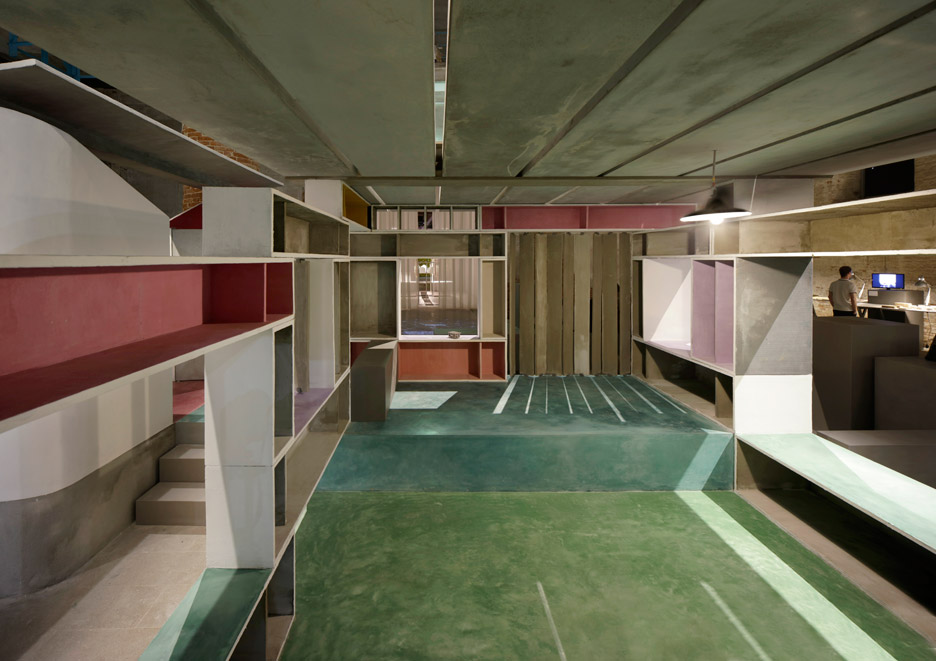
Kundoo brought skilled stone masons from India together with engineers from Germany to create the Full Fill Homes model, which is installed inside the Arsenale for the duration of this year's Venice Biennale.
As with several of the architect's previous projects, the full-scale house showcases the potential uses of ferrocement – a material made by layering mortar or plaster over metal mesh.
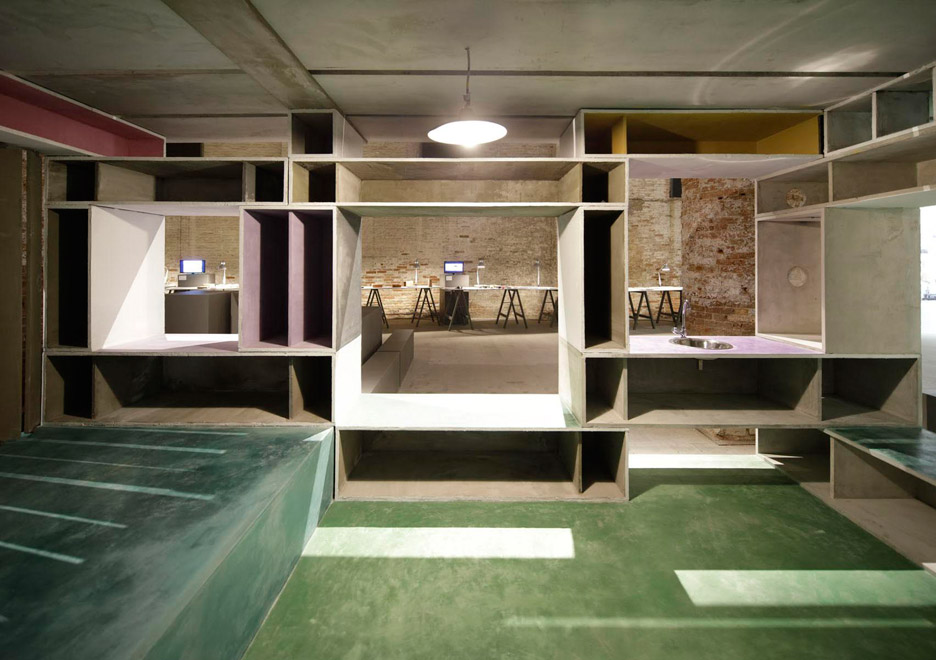
According to Kundoo, this engineered material offers a wealth of opportunities for architects but is particularly well suited to creating flexible and cost-efficient housing solutions, in India and elsewhere.
"It is a very high-tech material, ferrocement, but it also can be seen as low-tech, because it is hand crafted," she told Dezeen during a tour of the installation, adding that the material is affordable for even the most deprived regions.
"We're not just talking about affordability in terms of money here, we're also talking about impact on the environment," she said. "We can't afford to keep building the way we do."
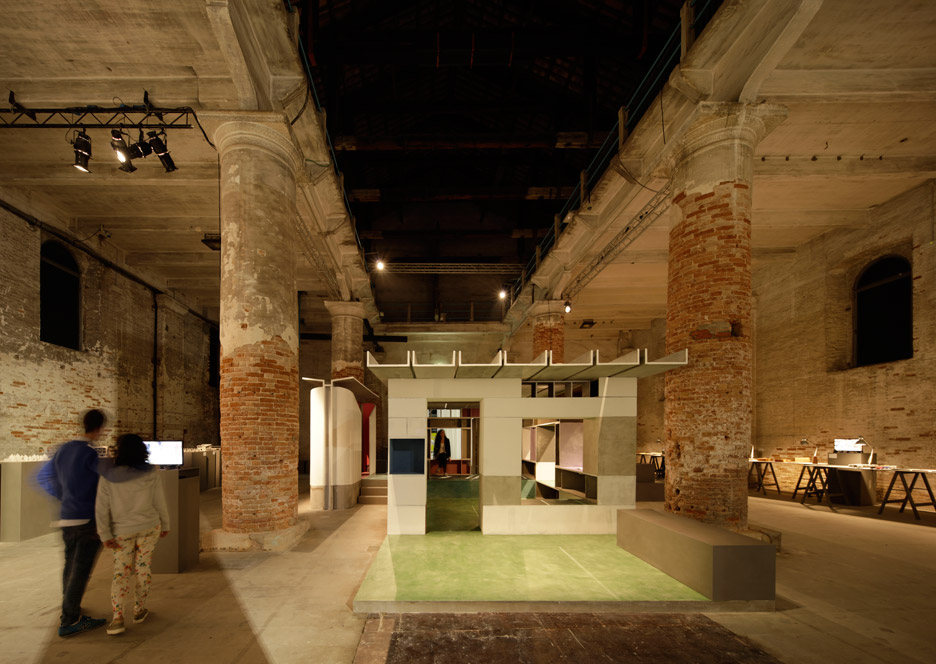
The housing prototype showcases a system of modular ferrocement blocks, which are stacked up to form walls and built-furniture, meaning they can be used to create homes in a variety of shapes and sizes.
The blocks are hollow, so they create plenty of storage areas. Because the material is easy to tint, the blocks can be manufactured in different colours, which could be used to denote different activities, ranging from food preparation to sleeping and bathing.
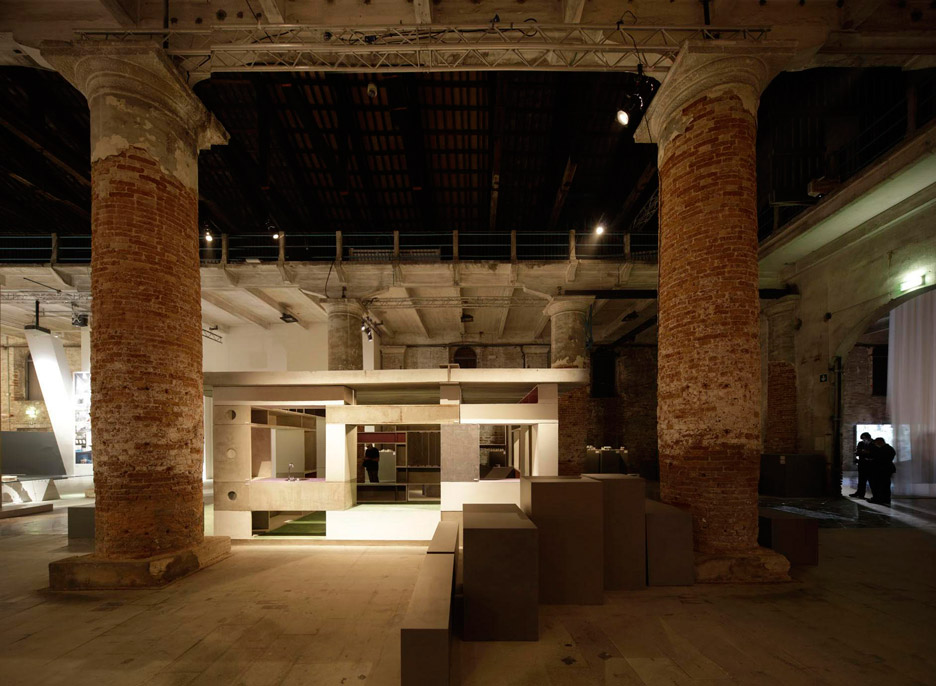
"We are trying to use simple blocks – Lego-like blocks, kitchen blocks, furniture blocks – for all of the materials and storage in the home," said Kundoo.
"In small homes, people need much more space for storage than people who have big houses, because the same number of things have to be accommodated," she explained. "So the voids are actually very ergonomically designed to contain enough spaces for all your needs."
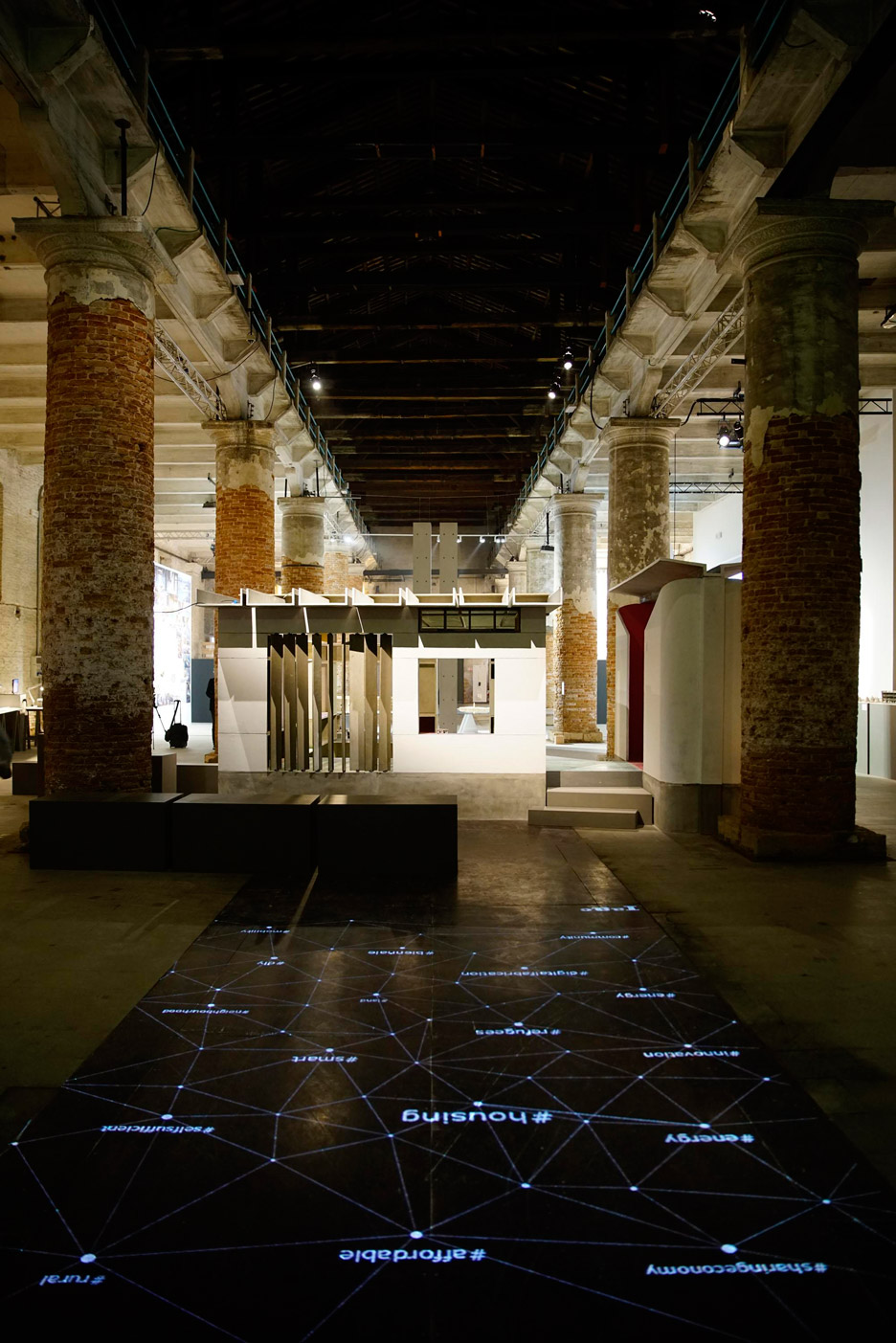
"But these boxes are also the right size to be benches, to double up as bed platforms, all of that," she added. "They offer a strategy, where you can build everything in the home in stages."
The blocks can also be produced in the backyards of masons' homes, helping to provide them with additional income.
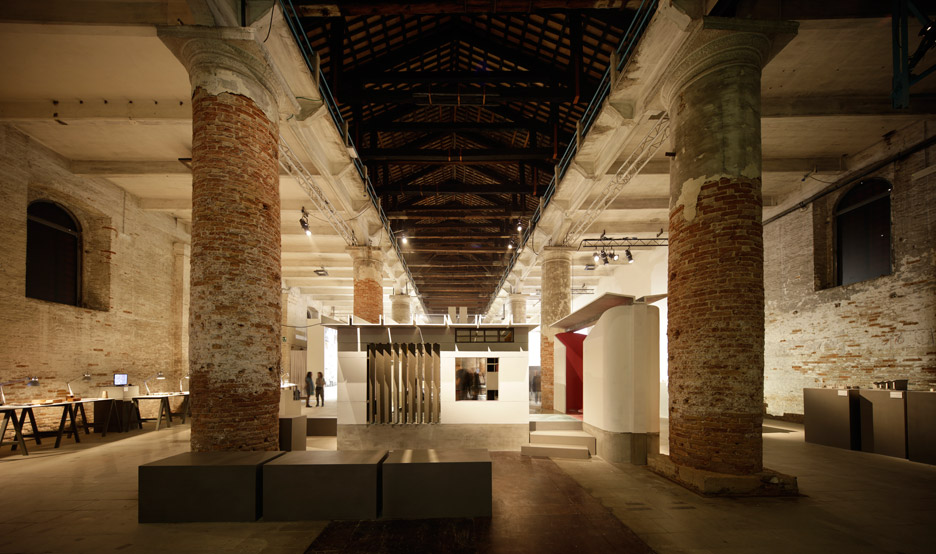
According to Kundoo, a Full Fill Homes property can be assembled in six days and disassembled in a single day. It is also designed to withstand strong winds and mild earthquakes.
This prototype was built using materials recycled from the German Pavilion at the Venice Art Biennale 2015. When this year's Biennale is over, the house will be transported to nearby Marghera to provide a residence for homeless people.
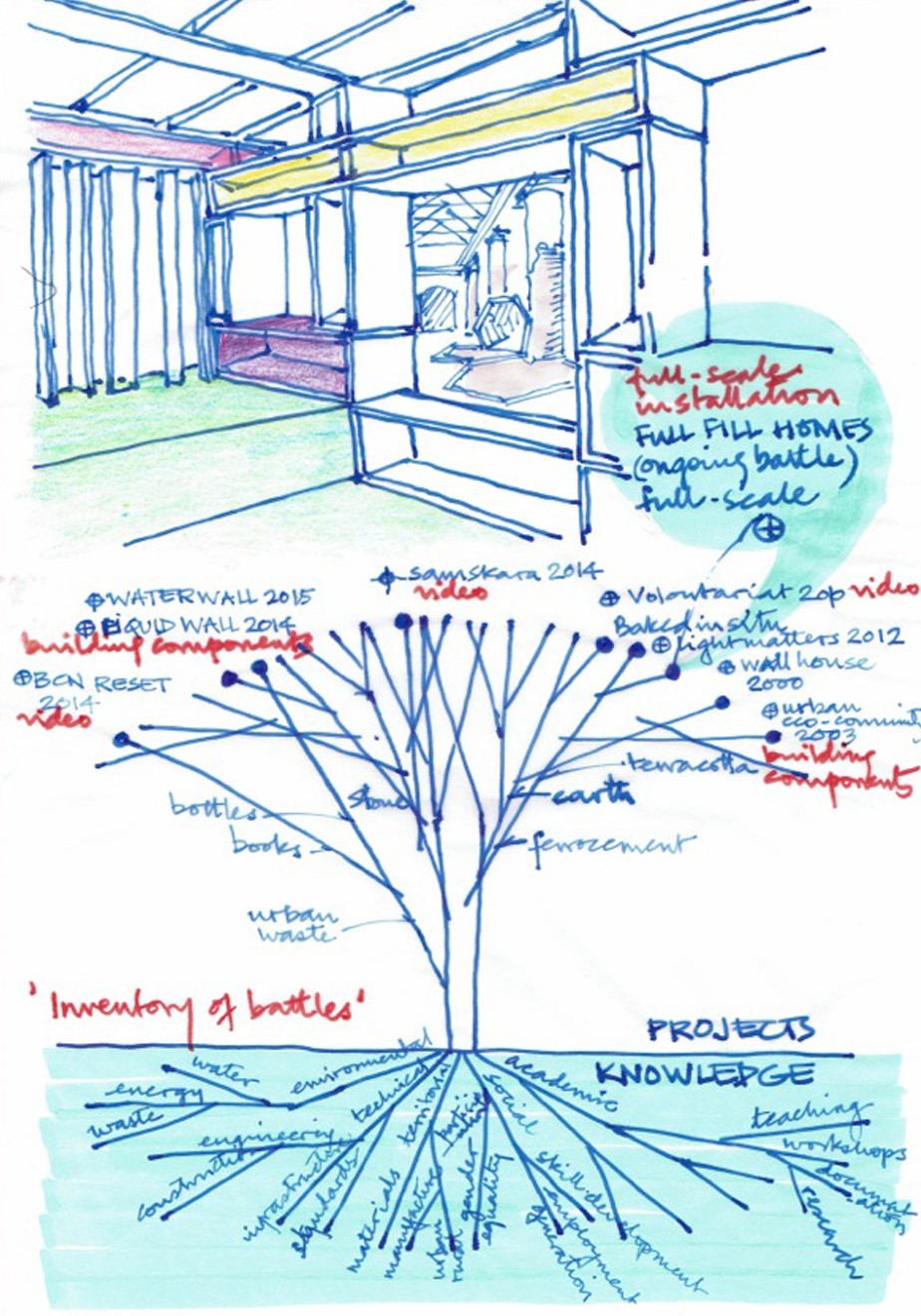
"My work is to find alternative solutions to build using significantly less materials, and action them," added Kundoo. "By using human resources like knowledge and ingenuity, we can save natural resources, creating houses with very little impact on the environment."
Kundoo has taken over an entire room in the Arsenale. As well as the house, she is exhibiting a full-scale model of a prefabricated toilet that also makes use of ferrocement. This is accompanied by models of completed buildings and examples of materials.
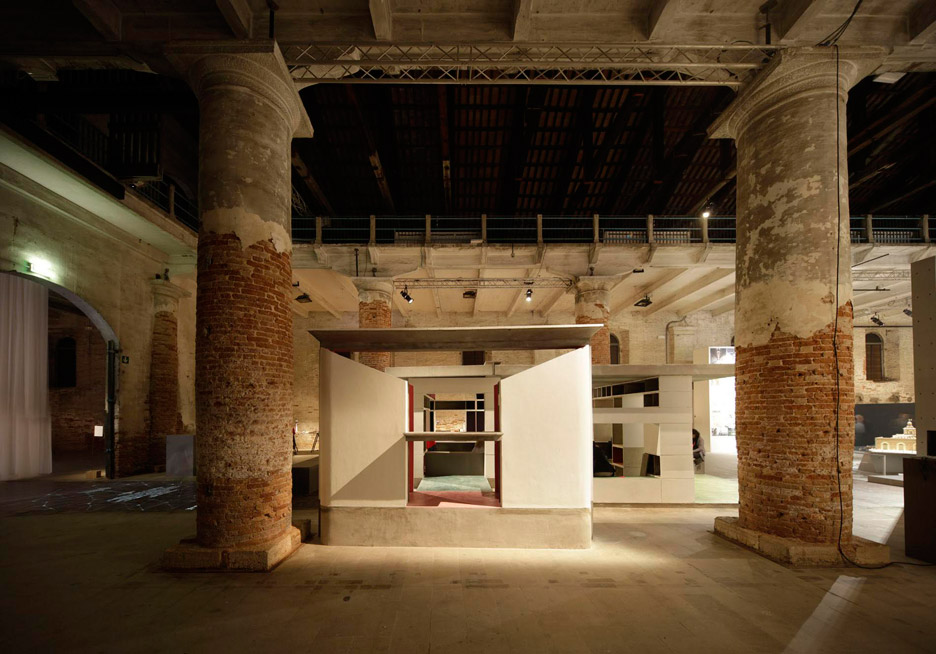
It forms part of the main Venice Biennale show curated by Chilean architect Alejandro Aravena. Entitled Reporting From The Front, the exhibition aims to shine a light on some of the most important global issues.
Other freestanding architectural constructions in the show include an expansive limestone canopy built without glue by a team led by ETH Zurich researchers and the Silver Lion-winning floating school.
Kundoo previously exhibited at the 2012 Biennale, where she built a replica of a house by Indian craftsman.